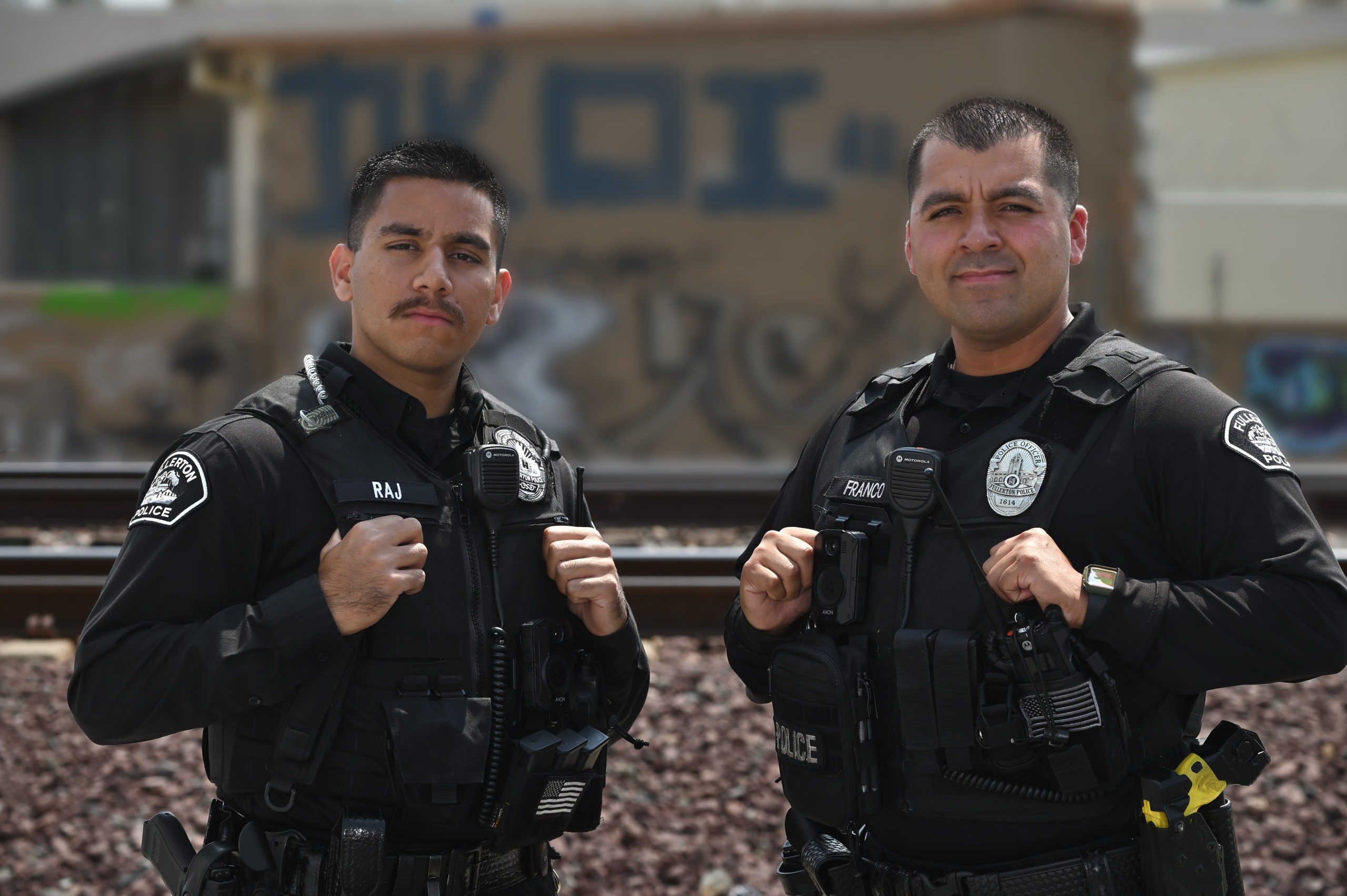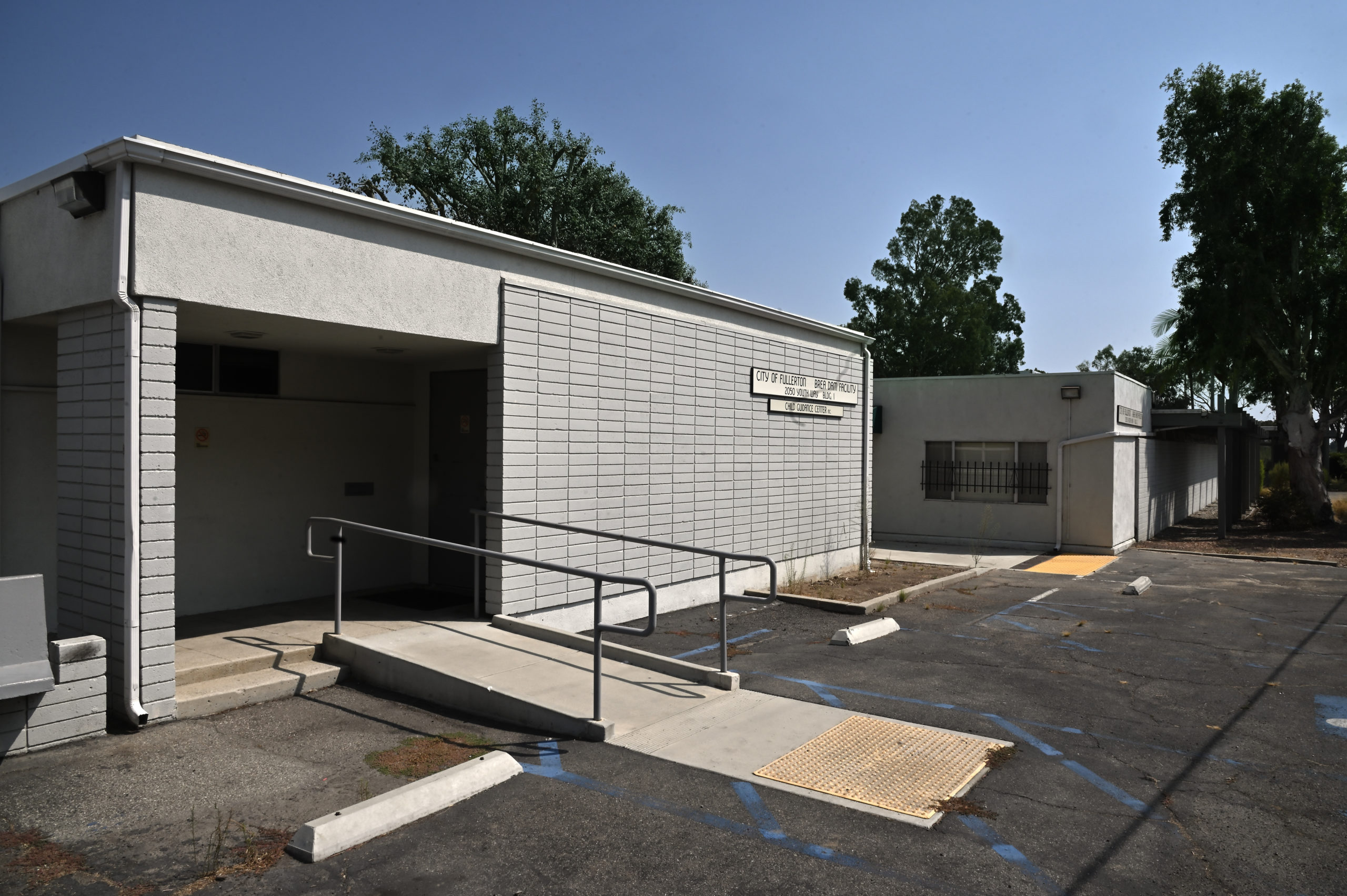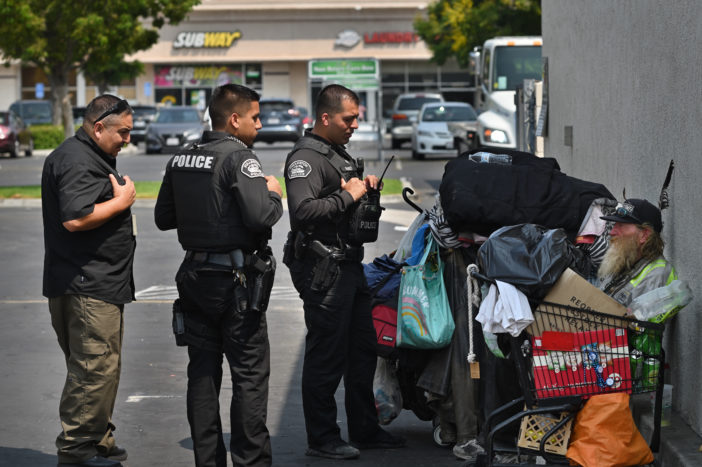At first blush the empty building on the side street of Youth Way doesn’t look like much with its distressed putty colored paint and overgrown weeds.
But to Fullerton Police Chief Robert Dunn the building is a beacon of hope.
Soon, this old building will begin a transformation to become the HOPE Center (Homeless Outreach and Proactive Engagement), a dispatch center that brings together social service workers, mental health officials and neighboring police departments under one roof.
Fullerton and Buena Park PD are partnering to launch the new center, with the hope other agencies will join them and further their efforts to police those experiencing homelessness with compassion while integrating new services, such as mobile healthcare response units.
“On any given day the HOPE Center will have an outreach worker either from Fullerton or Buena Park and a Homeless Liaison Officer; they will be available to send out on service calls to our homeless community,” Dunn said. “They will be able to bring resources out to a particular call and if it’s a non-law enforcement call, we will send out a homeless case worker to offer services. Our goal is for the police to no longer respond to these types of calls and to send the people who can really help.”

Fullerton PD Homeless Liaison Officers Max Raj, left, and Bryan Franco out in the field as they contact homeless people.
Photo by Steven Georges/Cornerstone Communications
For Dunn, the HOPE Center is a passion project inspired from his work with the North Orange County Public Safety Collaborative (formerly Task Force). Launched in 2017 with an original four-year state grant of $20 million, public safety officials from across the region developed highly effective partnerships with more than 40 community-based organizations (CBOs), collaborating on strategy, sharing resources and responding to community needs.
The Collaborative’s focus is youth violence prevention and intervention, reentry services and homeless outreach.

The location in Fullerton where a new homeless shelter will be built.
Photo by Steven Georges/Cornerstone Communications
Since the Collaborative’s inception, the group has commissioned a first-ever homeless census documenting 1,837 unsheltered homeless persons, of which a by-name registry of 1,324 was created. They also developed Outreach Grid, a first-of-its kind technology to help police and CBOs deliver immediate services and shelter beds. In 2020, three new Navigation Centers opened in Placentia, Buena Park and Fullerton, adding 400 beds to serve the region’s homeless population.
An additional $7.8 million included in California’s Budget Act of 2021 will sustain the Collaborative for another year and enable it to expand. Federal officials have also taken note of the Collaborative’s innovative approach to solving challenging social issues and are seeking an additional $5 million.
In October 2020, the development of the HOPE Center concept began as the end of the Collaborative’s funding began to loom.
“We didn’t know if we were going to get funded again, so I started to think of ways we could keep the collaboration process going with other police departments and CBOs, that was the idea behind the HOPE Center,” Dunn said. “We all enjoyed working together and I didn’t want to see that go away if we didn’t get the funding from the state.”
Buena Park Police Chief Corey Sianez and Dunn have worked together to solve overlapping issues and share similar views on using less law enforcement to respond to social service calls.
“We had such a good working relationship we started to brainstorm ideas on how we could move toward a model where we can get our officers to step away from answering these calls,” Sianez said. “We realize we need to leave it to the experts to answer these calls and take the focus off of law enforcement.”
The HOPE Center will follow the Collaborative’s model which puts the focus on metrics and information gathered, connecting the homeless to the right resources in the community and utilizing Outreach Grid to get people off the streets, into warm beds and working with social and mental health workers. The HOPE center also plans to expand its services by partnering with local hospitals and ambulance services to develop healthcare mobile response units that will provide medical intervention for illnesses and chemical dependency.
“What we realize now is that as a region we share all the same (homeless) people who are moving from one city to another, so it made sense for us to share the same resources,” Sianez said. “What’s different about what we are doing is that we are trying to do this together, all the cities that make up North Orange County. We are trying to do this from a regional perspective rather than just one police department doing their own thing. So that’s what we want to create – one style, one philosophy.”
The center is a natural next step for Dunn, who has seen firsthand what happens when police officers are given the proper tools, training, and resources to serve the community.
“We found that more often than not, enforcement is the least effective tool when you are out in the streets engaging with our homeless neighbors,” Dunn said. “Compassionately offering services usually has the most impact … that was something we had to learn. But now that we know, we want to be prepared and have resources available. The HOPE Center will have all of this.”
 Behind the Badge
Behind the Badge



